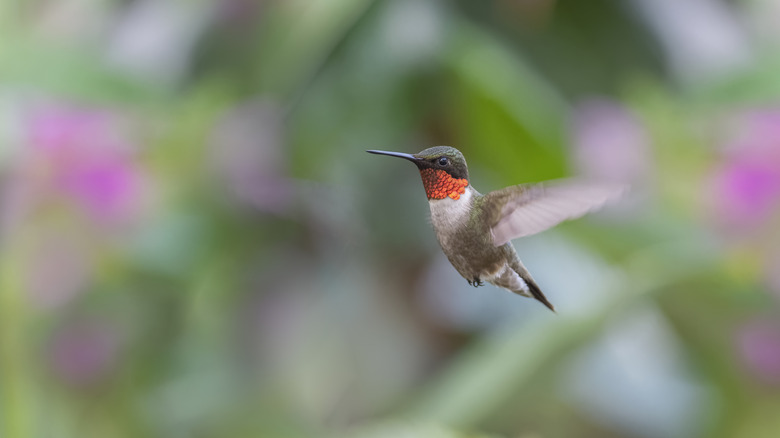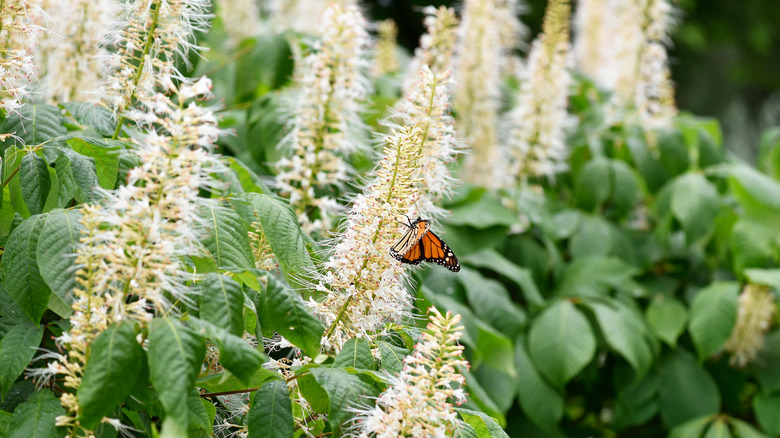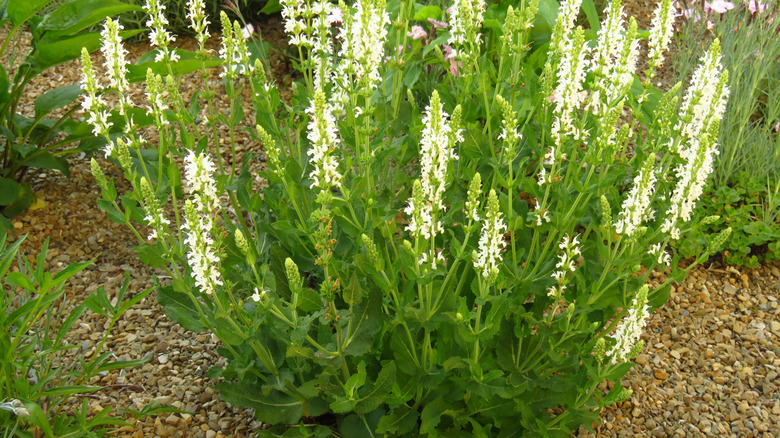Grow This Sweet-Smelling Shrub To Attract More Hummingbirds & Pollinators
Hummingbirds are voracious eaters who can easily visit thousands of flowers each day, so attracting more hummingbirds to your garden is all about growing the right plants that bloom at the right times. By providing a steady supply of nectar throughout the year, you can encourage more visitors to choose your yard over others. One shrub that blooms at a time when few other plants do is summersweet (Clethra alnifolia).
Summersweet is a deciduous shrub with clustered spikes of fragrant flowers that are typically white (though some cultivars are pink). It's native to eastern North America, growing in every state on the East Coast and as far west as Texas. It spreads outward into rounded heaps and grows around 5 to 10 feet tall. Summersweet is also known by other common names like coastal sweet-pepperbush or coastal sweet pepper due to the shape and smell of its fruits.
In addition to attracting hummingbirds, summersweet will also attract a wealth of other local pollinators and wildlife, including butterflies, bees, and small mammals. This shrub is cold-hardy in USDA zones 4 to 9. It's not difficult to grow in the right conditions, and it has several unique benefits that make it a great addition to any landscape design.
The benefits of growing summersweet
Hummingbirds will flock to these plants because they produce flowers through mid to late summer, from July to August, when most other flowering plants are finished blooming for the year. The nectar in the flowers also provides food to bees and butterflies at a time. Summersweet's flowers aren't just attractive to birds and bees — they have a lovely sweet, spicy smell that's popular with humans too, and can keep your garden interesting through multiple seasons with their textured, color-changing foliage.
Summersweet's fruits will ripen in the fall, around September or October. Dry, brown capsules, the fruits resembling peppercorns, remain on the plant all throughout the winter long after the flowers are gone, providing a useful food source to other birds and small mammals.
Summersweet can be grown in a row as an attractive border plant, providing a bit of privacy, or as a single shrub. It's mostly free of disease or pest problems, resistant to root rot, drought-tolerant, and can even bounce back from fire. When planted along streams or ponds, it also helps prevent soil erosion. Beneficial companion plants to plant alongside summersweet include rhododendrons and ferns, which look attractive together, prefer similar conditions, and won't outcompete summersweet for light.
How to grow summersweet
Summersweet grows best in full sun to partial shade. It needs moist soil on the acidic side with good drainage. In locations that are too dry and hot, summersweet won't thrive and may invite spider mites, whereas, in optimal environments, summersweet is pest- and disease-free.
You can buy summersweet transplants, grow summersweet from seed by planting in the fall or spring, or propagate cuttings in the early summer. Cover young plants with a few inches of mulch to maintain moisture while they are establishing. Once established, they are drought-tolerant.
Maintenance is minimal — simply prune the shrubs once a year in late winter or early spring, clearing dead branches and controlling the overall shape and size of the shrub. While summersweet does spread naturally through suckers, it does so slowly, so it's easy to manage if you'd prefer to minimize the number of shrubs. Summersweet is cold-hardy down to -22 degrees Fahrenheit and will go dormant in the winter.


